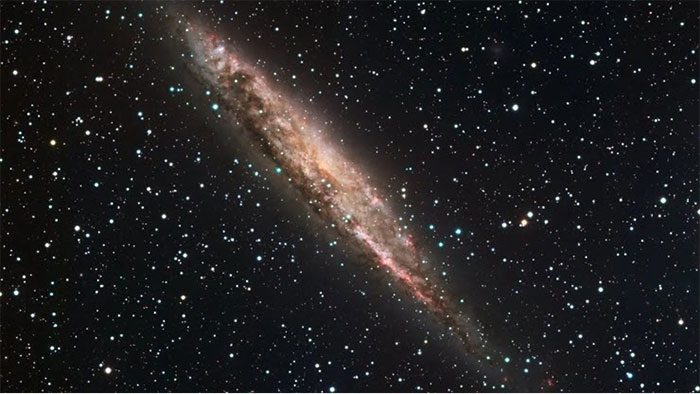NASA’s New Discovery Reveals Secrets About the Evolution of the Milky Way
According to BGR, NASA scientists have made an astonishing discovery: a “galactic fossil” rich in X-ray activity that may help us better understand the evolution of galaxies. Unlike fossils on Earth that are formed from bones or shells, this “fossil” consists of a collection of leftover energy activities within a galaxy that has undergone significant transformation.
This discovery is detailed in a report and a new video shared by NASA on YouTube. The video explains how the NGC 4945 galaxy was “activated” into a star-making machine due to an explosion from its central black hole about 5 million years ago.

NGC 4945 is an active galaxy located approximately 13 million light-years from Earth.
This is a fascinating story that helps people better understand the unique appearance of NGC 4945 and the evolution of galaxies in general. By studying this “fossil” further, NASA scientists hope to decode the reasons behind the central black hole’s explosion and determine whether this outburst truly propelled the galaxy’s frenzied star formation.
Kimberly Weaver, an astrophysicist at Goddard, led the research and presented this finding at the 243rd meeting of the American Astronomical Society in New Orleans on January 11. The research team has also written a paper on this discovery, which is currently under review by The Astrophysical Journal. If accepted, it will be widely published.
NGC 4945 is an active galaxy located approximately 13 million light-years from Earth, situated in the constellation Centaurus. As mentioned, it has a black hole at its center and is the site of a star formation storm known as “starburst”. Scientists estimate that this “fossil” produces the equivalent of 18 suns per year, nearly three times the star formation rate of the Milky Way, where we reside.
Furthermore, most of this star formation occurs at the center of the galaxy. Events like the starburst in this “fossil” are estimated to last from 10 to 100 million years, so it remains unclear when the starburst of NGC 4945 will come to an end.
The discovery of this “galactic fossil” is not only an exciting advancement in the field of astronomical research but also opens up many questions and new research directions regarding the formation and evolution of galaxies. Do other galaxies contain similar “fossils”? And what secrets might they reveal about our universe?


















































